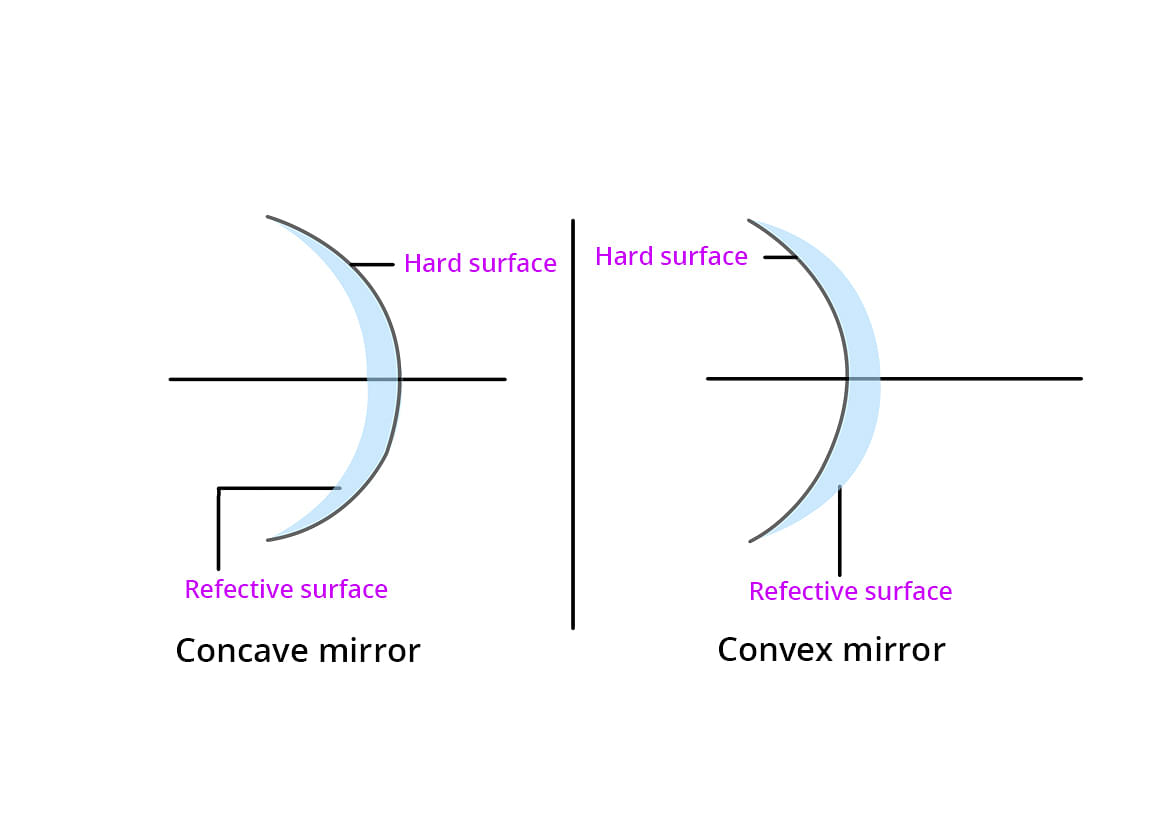An object is placed at a distance of 10 cm from a convex mirror of focal length 15 cm. Find the position and nature of the image.
Solution and Explanation
Focal length of convex mirror, \(f = +15\ cm\)
Object distance, \(u = −10\ cm \)
According to the mirror formula,
\(\frac 1v-\frac 1u=\frac 1f\)
\(\frac 1v=\frac 1f-\frac 1u\)
\(\frac 1v=\frac {1}{15}+\frac {1}{10}\)
\(\frac 1v=\frac {25}{150}\)
\(\frac 1v = \frac 16\)
\(v=6\ cm\)
The positive value of v indicates that the image is formed behind the mirror.
Magnification, \(m=-\frac {\text {Image\ distance}}{\text {Object\ distance}}\)
\(m =-\frac vu\)
\(m=-\frac {6}{-10}\)
\(m =+0.6\)
The positive value of magnification indicates that the image formed is virtual and erect.
Top Questions on Spherical Mirrors
- A concave mirror produces an image of an object such that the distance between the object and image is 20 cm. If the magnification of the image is \( -3 \), then the magnitude of the radius of curvature of the mirror is:
- JEE Main - 2025
- Physics
- Spherical Mirrors
- (ii) An object at a distance of 16 cm from a spherical mirror forms a virtual image at a distance of 12 cm behind the mirror. Determine the magnification of the image and type of the mirror.
- UP Board X - 2025
- Science
- Spherical Mirrors
- Image of an object formed by a concave mirror is real and of the size of the object. The object is placed -
- UP Board X - 2025
- Science
- Spherical Mirrors
- With the help of a suitable ray diagram, derive the formula \( \frac{1}{v} + \frac{1}{u} = \frac{1}{f} \) for a concave mirror.
- UP Board XII - 2025
- Physics
- Spherical Mirrors
- The length of the image formed by a concave mirror:
- UP Board XII - 2025
- Physics
- Spherical Mirrors
Questions Asked in CBSE X exam
- Describe any three features of the multiparty system.
- CBSE Class X - 2025
- Political Parties
- Explain any three factors responsible for water pollution.
- CBSE Class X - 2025
- Environmental pollution
- Describe the role of primary sector in providing employment.
- CBSE Class X - 2025
- Sectors of Indian Economy
- Describe the historical factors that contributed to the emergence of nationalist tensions in the Balkans.
- CBSE Class X - 2025
- The Rise of Nationalism in Europe
(i) Study the diagram and name the parts marked as A, B, C, and D.
(ii) Write the function of A and C.
- CBSE Class X - 2025
- Electricity
Concepts Used:
Spherical Mirrors
A spherical mirror is a mirror which has been cut out of a spherical surface.
There are two kinds of spherical mirrors:
- Convex Mirror
- Concave Mirror

Concave Mirror
Concave mirrors are also called converging mirrors, because in these types of mirrors, light rays converge at a point after impact and reflect back from the reflective surface of the mirror.
Convex Mirror
The convex mirror has a reflective surface that is curved outward. Regardless of the distance between the subject and the mirrors, these mirrors are "always" virtual, upright and reduced.